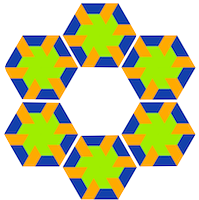Can AI tell me what is on the board ? Using Few-shot prompting
Read the grid with numbers and letters. Each row has 15 columns. There are 15 rows. For each cell in the grid produce a text with the format (row, column, text). For example (1,1,3L,0) for the first entry on row 1, column 1 with text: "3L". For example (1,2,,0) for the entry on row 1, column 2 with text: "".
Why you want this and how to become one 10-15 minutes read
This article is part of a series that began with The Replaceable Developer. That article examines how developers can prevent their current work from hindering their professional growth.
TL;DR Growing your skills will open doors to new challenging opportunities, which in turn can lead to making a bigger impact and, with promotions, a higher salary. The TEC model is a structured approach for achieving this.
Can AI tell me what design is implemented ? Recently, I wanted to contribute to some open-source Go packages that I use. Some of them have a large codebase with lots of subpackages. Despite the carefully chosen names for this these packages, without an overview and design description, it will require quite some time reading sources and debugging tests before a mental model is created. Without such an understanding, contributing to that open-source project is likely to fail.
Why you want this and how to become one TL;DR Once you are replaceable, you are free to start new initiatives, explore new technologies, solve the next complex problem which will make you happy and interested to stay at your job. Your organisation has a lower risk of discontinuity and can benefit more from your expertise. To be a replaceable developer, you need to
deal with all the relevant unshared software that you have created in solitude; document knowledge about relevant processes.
TL;DR Melrōse is both a language and a tool to create and listen to music interactively, The language uses musical primitives (note, sequence, chord) and many functions (map, group, transpose) that can be used to create more complex patterns, loops and tracks. Melrōse uses MIDI output to produce sound by any (hard or software) device attached. Melrōse can also react on MIDI inputs to start, record and stop playing musical objects.
After watching Play With Your Rythm: Drum Patterns, I was inspired to program some of these patterns in Melrōse.
Infrastructure automation The Google Cloud Platform (GCP) can provide the IT infrastructure you need to run your own applications or services. In addition, the platform also provides many products and services that can be used to build your complete IT landscape. Setting up infrastructure no longer includes provisioning hardware, patching operating systems and cable wiring up network components.
Instead, you now manage resources such as virtual machines, accounts, datastore, networks, enable APIs and setting permissions.
On March 23, Q42 and Google Amsterdam organized an event to watch the keynote from the GCP Next 2016 conference held in San Fransico.
As the Ubanita platform is hosted on the Google Cloud Platform, we were given the opportunity by Q42 to talk about our platform as part of a lightning talk. Ofourse, we had prepared a demo game and the audience was invited to join a simple multiplayer game.
Updates a linked list of future calls to send a message.
Algorithm for drawing a 2D ring shape using OpenGL bindings in Go (from the firespark project).
